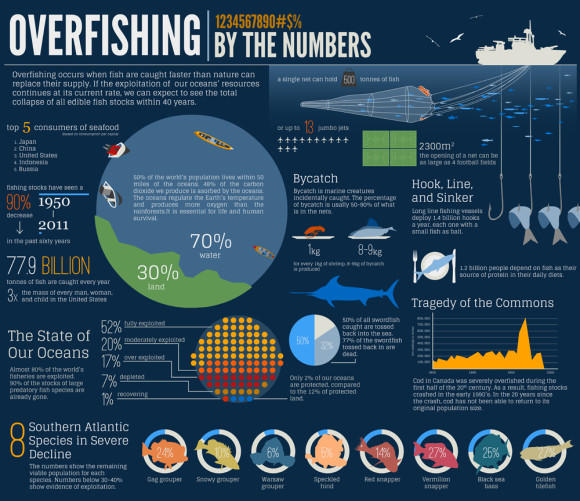The Resource Dilemma
A phenomenon exists where, in a world of scarce resources, restraint must be had so that those resources do not get depleted. Usually, avoiding the depletion and extinction of those resources is a group effort, with group members taking small hits to their personal well-being in favor of protecting the whole. What happens, though, when someone becomes greedy and takes too much? Or when, as time progresses, there simply isn’t enough to go around?
Here lies the resource dilemma. How can we proficiently give everyone an equal share of resources and protect against the depletion or overuse of those resources, especially by individuals whom we are not in contact with?
In recent years, the world’s population has grown extensively. About 100 years ago in 1920, the United States population alone was just over 106 million people; in 2020, that number tripled to over 331 million (US Census Bureau, 2022). With the recent influx of people living on the planet, the finite amount of resources available on Earth has become increasingly stretched thin.
Shortages in freshwater, living space, and other essential resources like oil and wood are bound to happen if they are not happening already. The following report details where we currently stand on various forms of resource depletion and where we are projected to run out of these resources if no major changes are made.
Water
As it stands, only 3% of Earth’s total water is freshwater, that is, water that can be used easily in an everyday environment.
In the United States alone, data from the 2015 US Geological Survey suggested that the average American uses about 82 gallons of water each day, whether it be through lengthy showers, leaving the faucet on while brushing their teeth, or washing their clothes, cars, and landscapes (United States Environmental Protection Agency, 2024). When you multiply that number by the 331 million people living in the country, the sheer amount of water usage is shocking–estimated to be about 322 billion gallons per day (Water Science School, 2018).
Though the US may never fully run out of water, we surely do use a lot of it, and there is no way to guarantee that it will always be in a usable place when people need it. Many areas, especially drier regions in the western states, are constantly living through water shortages and droughts, and the problem is only expected to get worse. One short article published by Harvard University even stated that in about half a century, the country’s water supplies will be a third of their current size, not even accounting for the increased demand for water that will come with higher populations of people (Wilkerson, 2019).
Living Space
As for living space, an astute lack of affordable housing is plaguing the United States. Homelessness is on the rise, and with housing costs rising faster than most incomes, those looking to live on their own may struggle in the coming years (Collyns, 2025).
But at what point will we truly run out of places for people to live? Again, we are faced with a nonimmediate issue. The United States is currently home to a lot of open land, so space is not necessarily the limiting factor. Competing with the job market and getting resources where they need to be is the largest hurdle to be jumped.
Other Essential Resources
Oil
- The US produced 12.9 million barrels per day in 2023 (U.S. Energy Information Administration, 2024a).
- The US used about 20.25 million barrels of petroleum per day, much more than we were able to produce (U.S. Energy Information Administration, 2024b).
Wood
- Nearly 439 million cubic meters of roundwood was harvested from American timberlands in 2018 (Greene, 2020). This number does not include all timber that has been harvested, only roundwood timer, which is supplied in log form.
- Americans use 10 to 15 billion cubic feet of wood per year, collectively (United States Department of Agriculture Forest Service, n.d.). Again, we are using more than we harvest, but efforts of conservation of this particular resource should also be accounted for in this comparison.
Conclusion
The world is growing, and overconsumption, at least in the United States, is bound to have its impacts sooner or later. If, instead, we were able to band together and each do a small part in conserving these resources, the cumulative effects could be mountainous. Then, rather than letting our resources deplete past the point of no return, perhaps more logical solutions to the population problem may be explored.
References
Collyns, C. (2025). Why has the US Homeless Population Been Rising?. Econofact. https://econofact.org/why-has-the-us-homeless-population-been-rising#:~:text=There%20were%20771%2C480%20people%20recorded,the%20 numbers%20recorded%20in%202023.
Greene, J. (2020). How much timber does the US harvest, and how is it used?. ResourceWise. https://www.resourcewise.com/market-watch-blog/how-much-timber-does-the-us-harvest-and-how-is-it-used#:~:text=In%202018%20(the%20most%20recent,come%20to%20depend %20on%20in
United States Department of Agriculture Forest Service. (n.d.). Wood Products in Everyday Life. Forest Atlas of the United States. https://apps.fs.usda.gov/forest-atlas/benefits-wood-products.html
United States Environmental Protection Agency. (2024). Statistics and Facts. EPA. https://www.epa.gov/watersense/statistics-and-facts
US Census Bureau. (2022). Historical Population Change Data (1910-2020). https://www.census.gov/data/tables/time-series/dec/popchange-data-text.html
U.S. Energy Information Administration. (2024a). United States produces more crude oil than any country, ever. EIA. https://www.eia.gov/todayinenergy/detail.php?id=61545
U.S. Energy Information Administration. (2024b). Frequently asked questions (FAQs). EIA. https://www.eia.gov/tools/faqs/faq.php?id=33&t=6#:~:text=Although%20we%20use%20petroleum%20product,7.39% 20billion%20barrels%20of%20petroleum.
Water Science School. (2018). Total water use in the United States. USGS. https://www.usgs.gov/special-topics/water-science-school/science/total-water-use-united-states
Wilkerson, J. (2019). Future widespread water shortage likely in U.S. Science in the News. https://sites.harvard.edu/sitn/2019/03/20/widespread-water-shortage-likely-in-u-s-caused-by-population-growth-and-climate-change/


